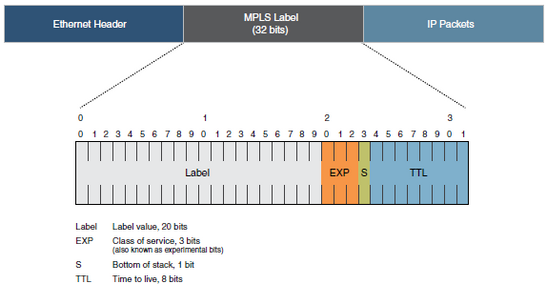Answer
In the traditional Layer 3 forwarding paradigm, as a packet travels from one router to the next, an independent forwarding decision is made at each hop. The IP network layer header is analyzed, and the next hop is chosen based on this analysis and on the information in the routing table. In an MPLS environment, the analysis of the packet header is performed just once, when a packet enters the MPLS cloud.
When a packet enters the MPLS cloud, it is assigned to a label-switched path (LSP). Each LSP is identified by a label, which is a short (20-bit), fixed-length value at the front of the MPLS label stack (32 bits). Labels are used as lookup indexes for the label forwarding table. No additional parsing or lookup is performed on the encapsulated packet, enabling MPLS to support the transmission of any other protocols within the packet payload.
For each label, the label forwarding table stores forwarding information. You can associate additional information with a label—such as class-of-service (CoS) values that can be used to prioritize packet forwarding.
The following figure shows the encoding of a single label. The encoding appears after data link layer headers, but before any network layer header.

For more information, click Junos OS MPLS for EX Series.